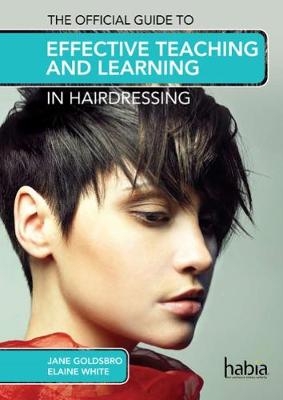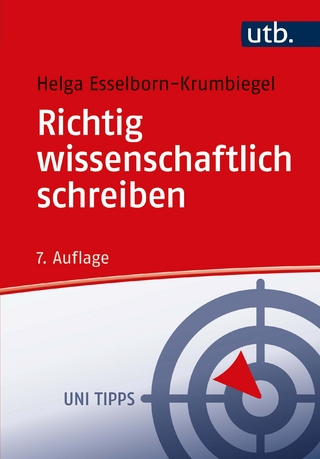
The Official Guide to Effective Teaching and Learning in Hairdressing
Cengage Learning EMEA (Verlag)
978-1-4080-7266-0 (ISBN)
This essential timesaving tool is fully endorsed by Habia and offers Trainee Hairdressers and Fulltime Practitioners advice on ensuring their teaching is interesting, inspiring and motivational for all hairdressing learners.
This book motivates readers to question the teaching and learning techniques they currently use and offers new, constructive ways for the educator to improve the quality of their teaching to hairdressing students. Readers will learn how to deliver a range of different teaching methods that can be used for starter activities and main programme content, all in the context of hairdressing learning and mapped to the hairdressing curriculum.
Readers will also have access to a free online companion website offering downloadable templates and text to help prepare for lessons and plan the delivery of the hairdressing curriculum to learners of all ages in any learning environment.
This book is suitable for all awarding associations, ensuring students have everything they need to pass their course.
Jane Goldsbro is Director of Standards and Qualifications at the Hairdressing and Beauty Industry Authority (Habia). Jane has over 25 years¿ association with the hairdressing industry. This work ranges from employment as a stylist to salon manager, followed by working with a hairdressing manufacturer as an educator and in Further Education. Elaine White has a lifetime’s experience in the hair and beauty sector. From salons to education she has been involved with the development and implementation of some of the most influential learning programmes in hair and beauty. She is a technical author, educational consultant, moderator, examiner and inspector for hair and beauty qualifications.
1. Introduction to teaching and learning in the hairdressing industry
Communication skills for teachers
Professionalism in the learning environment
Safeguarding for children and learners
Dealing with learner disruptions
Mentoring and being mentored
Continuing professional development requirements for hairdressing
Development checklist
2. How learners learn
Learning theories
Applying the theories
Using the theory of behaviourism
Using the theory of cognitivism
Using the theory of constructivism
Using the theory of humanism
Preferred learning
Learning styles
Applying Gardner’s separate intelligences for hairdressing
Impact of learning psychologies and learning styles
Dyslexia in the hairdressing industry
Teaching and learning for learners with dyslexia
Development checklist
3. How to plan for teaching and learning in hairdressing
The planning process
Curriculum planning
Completing a scheme of work
Lesson planning
Development checklist
4. Teaching and learning strategies and methods
Teaching and learning strategies and methods
Teaching strategies
Teaching and learning methods
Using experimental learning
Using relating theory to practice and practice to theory
Using multi-sensory learning
Using modelling
Using learning conversations
Using e-learning and technology
Teaching and learning activites
A menu for teaching and learning
Embedding differentiated learning
Differentiation and learning outcomes
Development checklist
5. Assessment methods and techniques
Why assess?
Recording the results of assessment
Initial assessment
Formative assessment and assessment for learning
Applying assessment for learning techniques
Taking assessment for learning further
Summative assessment and assessment of learning
Qualifications for the hairdressing industry
Realistic Learning Environment (RLE) criteria for VRQ delivery
NVQ/SVQ delivery
Development checklist
6. Successful starts and evaluative ends
The importance of successful starts for teaching and learning
The importance of evaluative plenaries for teaching and learning
Periodic plenaries
Benefits of using activities as session starters and for evaluation
Starter and plenary activities
Teacher or self-evaluation
| Erscheint lt. Verlag | 2.8.2013 |
|---|---|
| Verlagsort | London |
| Sprache | englisch |
| Maße | 170 x 240 mm |
| Gewicht | 375 g |
| Themenwelt | Sozialwissenschaften ► Pädagogik |
| Wirtschaft | |
| Weitere Fachgebiete ► Handwerk | |
| ISBN-10 | 1-4080-7266-1 / 1408072661 |
| ISBN-13 | 978-1-4080-7266-0 / 9781408072660 |
| Zustand | Neuware |
| Haben Sie eine Frage zum Produkt? |
aus dem Bereich


